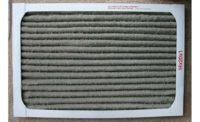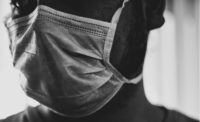With the recent outbreak of the coronavirus, Fruchtman and Associates are frequently asked how to make a building environment safer for the occupants. This article addresses this issue.
Employers and employees alike are all trying to figure out if and when they will be returning to their workplace. When they do, things will be different. Seating arrangements, space density, and working hours will all change. A lot of clients are asking what they could do to make the building HVAC systems as safe as possible. The answer is easy, but the solution is not. It is generally agreed that maximizing fresh air and improving air filtration reduces the likelihood of COVID transmission; however, this cannot be achieved easily.
The vast majority of building HVAC systems are designed to recirculate building air. Usually, some fresh air is introduced into the air-handling equipment, but it is generally only a small percentage of the overall amount of the air supplied to the environment. In most systems, the fresh-air intake percentage could be increased to some extent; however, during the cooling season, increasing the amount of outside air will, on warm days, increase the temperature of the air returning to the cooling coil, thereby increasing the load on the HVAC system. This could result in lack of sufficient comfort cooling to the space. If the air returning to the coil is too warm, operational problems could result. Energy costs will increase. Room pressurization issues could become a problem as well. Similar issues will be encountered during the heating season.
Most HVAC systems include air filters; however, the air filters used in most building HVAC systems are generally not designed to purify the air but are designed to remove large dust particles that would otherwise plug up heating and cooling coils. Filters are available that are designed to clean small particles from the airstream; however, these more efficient filters also restrict airflow. Most HVAC systems do not have the capability to push air through these more restrictive filters. If airflow is restricted, problems could occur with the HVAC system that could cause the equipment to fail. HVAC systems could be modified to accommodate higher efficiency filters; however, to do so is usually not easy nor inexpensive, as extensive duct modifications are generally necessary to create space for a filter system which can accommodate a high-efficiency filter and has enough surface area as to not adversely impact the operation of the HVAC system.
For HVAC systems that are served by unitary equipment (i.e. package rooftop units, split system heat pumps, split system gas furnaces with cooling coils), make sure thermostats are not set in the “auto” mode but are set in the “on” mode. The auto mode turns the unit supply fan off when the space temperature is satisfied, thereby eliminating air circulation. The on mode maintains continuous air circulation and ventilation in the space.
Many restrooms have fans that turn on only when the lights are on. Modify the controls so fans run continuously while the building is occupied.
Large buildings with central HVAC systems often have air-handling units that distribute air to multiple tenant spaces and often multiple floors in the building. Air from all of the tenant spaces served will return to a common air handler and mix. This air is then filtered, and some outside air is introduced, but most of the air continues to be recirculated back to the tenant spaces. So, larger buildings generally allow for more "comingling" of air between the various spaces served. On the positive side, air handlers, which are part of larger building systems, often have stronger fans or could be retrofitted with more powerful fans that allow for the incorporation of higher efficiency air filters that are capable of capturing smaller particles in the airstream.
Larger building HVAC systems also have fresh-air intakes that draw outside air into the HVAC system. As with smaller HVAC systems described above, increasing the amount of outside air is usually possible; however, increasing outside air will increase the load on the HVAC system, resulting in higher energy cost and possibly resulting in insufficient cooling and heating at times. Operational problems could result with some systems as well.
UV-C lights are available, which can be incorporated into an HVAC system. It is well known that UV-C light will kill microorganisms and has been used effectively to kill organisms on cooling coils and other interior surfaces of an air handler. However, while UV-C light is effective at cleaning interior surfaces of the air handler, which are continuously exposed to the light, it is not effective against microorganisms in the air that pass through the system. In order for UV-C light to be effective, the particles need to be exposed to the light for a significant amount of time. However, air within HVAC systems travel through very quickly and is therefore only exposed to the UV-C light for a very short period of time.
Consider replacing HVAC systems in areas that must have high-occupancy density, such as conference and meeting rooms, with HVAC systems that utilize 100% outside air. It is expensive to incorporate and operate these system, but eliminating air recirculation in these areas is essential.
Evaluate air pressurization in building spaces to ensure that air in high-use or high-density areas is exhausted and maintained at a negative pressure with respect to other spaces in the building. This will minimize migration of potentially contaminated air to other spaces.
Replace noisy bathroom exhaust fans with new quieter fans to ensure that they remain in operation during occupied periods.
Plumbing fixtures have always been potential sources of contamination. Replacing manual flush valves and sink faucets with hands-free-type units will eliminate contact with the mechanisms.
Atomized spray from toilet flushing is another source of cross contamination. Toilet seats should include drop down covers. Signs should be posted in restrooms that ask users of the facilities to close the seat cover prior to flushing the toilet.
Dried out plumbing fixture traps allow contaminants from the sewer system to migrate into the building airstream. Ensure that drain traps are primed with water. If the drains have trap primers, they should be checked to ensure they are operating properly. Water should be run at private showers and sinks that are not frequently used.
As noted, there is a large shopping list of things that could be done to make a work space safer and healthier. Some of these measures are simple to do and should be incorporated immediately. Others require analysis and planning, are expensive, and may not be economically feasible for building owners, especially during this very difficult period. However, all HVAC and plumbing systems should be evaluated and adjustments should be made where possible to make the work environment as safe and healthy as possible.





